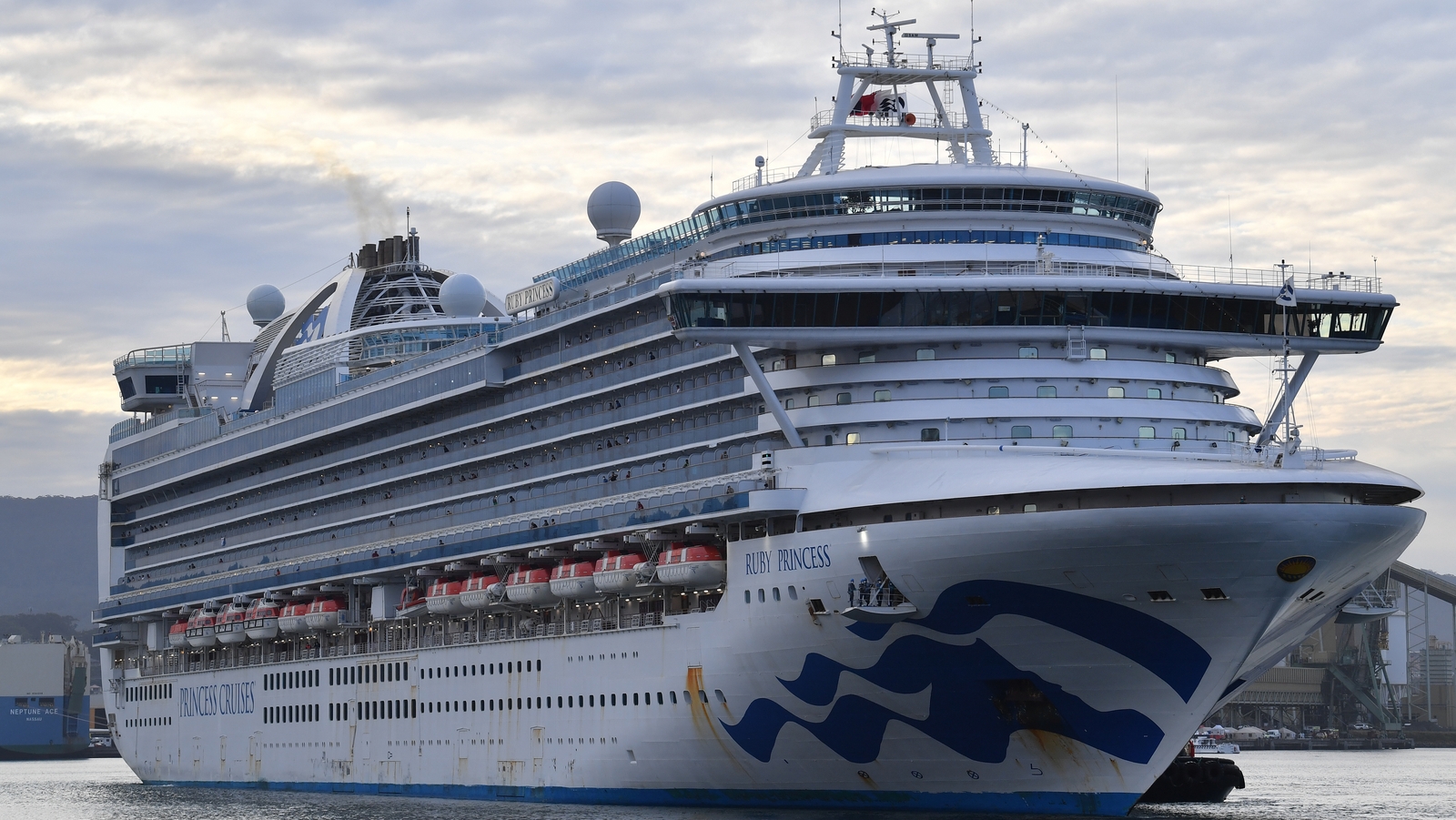Table Of Content

The following "health advisory" list of recommended actions is often issued during gastrointestinal illness outbreak or on embarkation day (of the next scheduled voyage). It has important suggestions on how to avoid spreading the cruise ship virus infection. Passengers who experience norovirus symptoms like vomiting and diarrhea should notify staff and follow recommended precautions, per the CDC. Including this outbreak, so far this year there have been 12 notable instances of gastrointestinal illness on international cruise ships reported by the CDC.
The 4 Most Common Contagious Diseases on a Cruise Ship
Numerous studies confirm that a quick application of hand sanitizer doesn't kill the Norovirus. It takes about 30 sec of hard rubbing with hot water and soap (including under the nails) to wash it. During the onboard illness outbreak, VSP requires the cruise company to activate the "Outbreak Prevention and Response Plan" (vessel's response to illness cases). The outbreak was reported one day before the “Easter” themed cruise was scheduled to end. It's important to wash your hands with soap and clean water frequently, but especially after using the bathroom or changing diapers, before eating and before touching your face. There’s no specific treatment or antiviral for norovirus, according to Ostrosky, but most cases can be managed at home with supportive care like hydration and rest.
COVID, Bird Flu, Monkeypox – A Virologist Explains the Surge of Virus Outbreaks Around the World
Other possible actions and results are red level ("Code Red") cleaning. The boarding/embarkation of new passengers is often delayed to permit more extensive disinfection of public areas and the cabins. Usually, a pre-embarkation health advisory is distributed to all boarding passengers. Additional med staff is sent to the ship in port to assist the disembarkation of infected passengers. Another possibility is the cruise ship to cancel all the itinerary's foreign ports of call and to return to its US home-port before the end of the voyage. VSP (abbrev "Vessel Sanitation Program") monitors CDC's observations on illness patterns for GI (gastrointestinal) outbreaks on passenger shipping vessels (ferries and cruise ships).
2024 Is Already Shaping Up to Be the Year of Cruise Ship Norovirus Cases - Matador Network
2024 Is Already Shaping Up to Be the Year of Cruise Ship Norovirus Cases.
Posted: Wed, 13 Mar 2024 07:00:00 GMT [source]
Outbreaks 2015 reports
For instance, medical officers are required to maintain illness incident counts for each voyage that involves a stop at an American port. They are also required to communicate to the CDC, within 24 hours of arrival at a U.S. port, "the number of passengers and crew members who reported diarrhea to the ship's medical staff" during that voyage. Norovirus cases aboard cruise ships were on a steady decline between 2006 and 2019, according to CDC data. When the Covid pandemic hit, the CDC made a travel health notice advising against cruise ship travel. Because of this, there were no norovirus outbreaks in 2020 and 2021.
Norovirus often isn’t just your typical I’m-feeling-a-little-sick-so-I-may-pass-on-shuffleboard type of gastroenteritis. No, a norovirus infection can consist of projectile vomiting and explosive diarrhea. Similarly, you’ve got to be careful about anything that could explode in your pants. You can use the NORS Dashboard to learn about outbreak reports of foodborne, waterborne, and enteric (gastrointestinal) diseases spread by person-to-person contact, environmental contamination, animal contact, and more. The predominant symptoms of the gastrointestinal illness include diarrhea and vomiting.
Zika virus (aka ZIKV) is a Flavivirus - from the genus of the viruses named West Nile, dengue, tick-borne encephalitis, yellow fever. These plus several other viruses may cause encephalitis (acute brain inflammation). In humans, Zika virus causes the Zika fever which is known to occur only within some equatorial regions. In 2014, Zika spread across the Pacific Ocean to French Polynesia, and soon to Easter Island. In 2015, Zika virus reached Central America, the Caribbean, and South America.
How common is it?
Norovirus is also known as the “Cruise ship virus” because conditions on cruise ships can stack the deck for the spread of norovirus, so to speak. Typically, a cruise ship will have dozens, hundreds, and in some cases thousands of people sharing surfaces, objects, food, drink, and who-knows-what-else over extended period of times. Norovirus is highly infectious, as I’ve described for Forbes previously. Plus, hand sanitizer and cleaning materials that don’t contain something more powerful like bleach may not get rid of the virus from a surface.
After a lull during the COVID-19 pandemic, cases of the highly contagious virus that causes diarrhea and vomiting, aka stomach flu, spiked this winter and spring on land. As post-pandemic travel surges and millions of Americans return to cruise ships, an increasing number of cruise lines are reporting outbreaks at sea. There are more than 21 million US cases reported annually, of which 1 mill related to kids. Outbreaks happen mostly during winter months and mainly in more crowded places with close quarters. Among those are schools, hospitals, nursing homes, dormitories, prisons, big resorts, bigger passenger ships (including cruise ferries).
The most common symptoms of a norovirus infection are nausea, vomiting, diarrhea, and stomach cramping. You can also get a low-grade fever, chills, a headache, and muscle aches. Such symptoms tend to emerge rather suddenly about one or two days after the virus has gone down your pie hole. Norovirus is the leading cause of outbreaks from contaminated food in the United States. About 50% of all outbreaks of food-related illness are caused by norovirus. Most of these outbreaks occur in food service settings like restaurants.
That's already significantly higher than in previous years, with 2022 seeing four instances and 2021 only one. In 2019, the year before the coronavirus pandemic hit the industry, there were 10, following 11 in both 2018 and 2017. The virus can be introduced into healthcare facilities by infected patients, staff, visitors, or contaminated foods. Norovirus illnesses can be more severe and occasionally even deadly in patients in hospitals or long-term care facilities when compared with healthy people.
You actually need to use soap and water to physically destroy it and remove it from your hands,” Ostrosky previously told TODAY.com. Norovirus can also get into food before, during or after preparation, and it's the top germ causing foodborne illness in the U.S., per the CDC. Virus particles can contaminate drinking water that isn't treated properly or pools when people poop in the water.
A cruise ship's medical facility can treat only passengers experiencing minor health issues - seasickness, scrapes, sunburns, etc. More severe medical emergencies can't be handled on the ship and usually require medevacs. Coast guard helicopter teams fly to the ship, hoist the passenger (accompanied by a spouse/relative and a crew nurse) and fly them to the nearest land hospital. Cruise ships publish daily health and safety instructions to their passengers on how to avoid mosquito bites. Zika symptoms are fever, skin rash, pain in joints, conjunctivitis (pink eye).
That’s the highest tally in 10-years, ever since 16 such outbreaks occurred in 2012, according to the Centers for Disease Control and Prevention (CDC) Vessel Sanitation Program. And with half of 2023 still to go, there’s a good chance that the 2012 count will be surpassed sometime later this year. Buffet service often switches from "help yourself" to manned stations. If you feel ill from Norovirus while on a cruise ship, visit the ship's doctor. Additionally, be sure to drink plenty of water, as dehydration is a common side-effect.
This includes sharing food/utensils and poor hygiene (not washing hands after bathroom use). The virus also spreads fecally, so you can catch it into the onboard laundry, or while changing diapers, etc. However, many passengers likely can blame a sick crewmember for the virus. According to a survey based on 170 inspection records on ships that docked in Florida ports in 2012, on 59 cruises violations of the required illness reporting laws were reported.

No comments:
Post a Comment